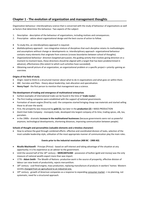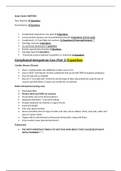Samenvatting
Samenvatting / Summary International Business Management [Organization & Management, an international approach]
- Instelling
- Hogeschool Windesheim (HW)
Full summary of Organization & Management, an international approach [Chapter 1-10] * Added graphics of relevant content! * Passed the exam with an 8.6
[Meer zien]






